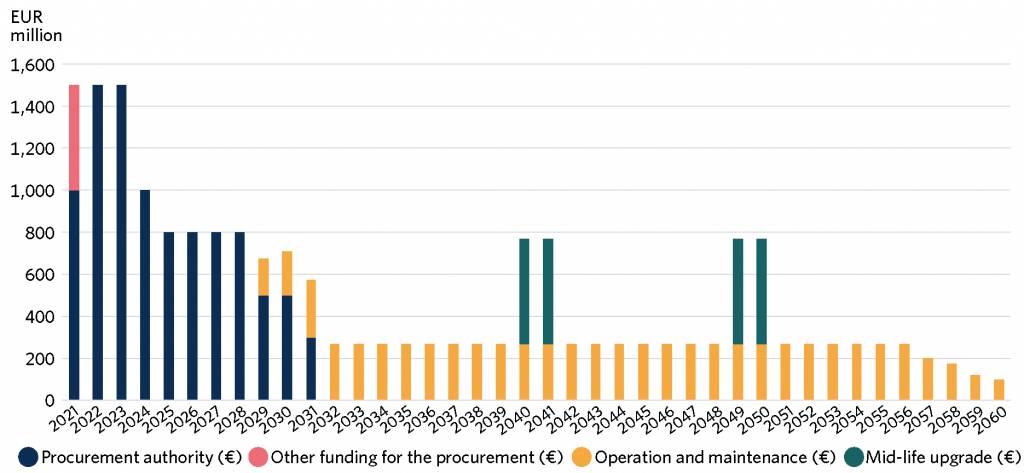The HX Fighter and Squadron 2020 projects of the Finnish Defence Forces have been prepared thoroughly. However, the estimated total costs could be more transparent.
The aim of the HX Fighter and Squadron 2020 projects is to replace and develop the Air Force and Navy capabilities to be phased out after the mid-2020s. Squadron 2020 has progressed to a phase where the shipbuilding contract and other key procurement decisions have already been made, whereas the HX Fighter project has not yet reached the final tendering phase (Best and Final Offer) and decision-making.
The purpose of the audit is to provide information on the long-term cost impacts and risks of these projects to support the related decision-making. The audit examined how the lifecycle costs and the prerequisites for implementation have been ensured in the preparatory phase. In addition, the audit assessed the impact of the HX project on compliance with the EU and national fiscal rules.
The projects are significant for central government finances. In the Government’s Defence Report for 2017, the value of the HX procurement was estimated to be EUR 7–10 billion. The annual operating and maintenance costs are based on the annual costs of the present Hornet fleet. In October 2019, before the Revised Request for Quotation was issued, the Ministerial Committee on Economic Policy specified the procurement budget to be EUR 10 billion. At the same time, the operating and maintenance costs were capped at 10 per cent of the annual military defence expenses. At the cost level of 2020, this would mean a maximum of EUR 270 million per year. When the estimated EUR 2 billion mid-life upgrades are added to the lifecycle costs, the lifecycle costs can total about EUR 20 billion at the price level of 2020.
The decision-making model and selection criteria of the HX Fighter project aim at maximizing the capability to be procured. The other areas in the decision-making model – security of supply, industrial cooperation, and lifecycle costs – are assessed as pass/fail. However, the different areas are not separate from each other but form a highly interconnected entity. Decisions taken in the area of security of supply or industrial cooperation have always an impact on the lifecycle costs of the system as well.

Information related to the lifecycle costs is specified only in the final tenders and may remain uncertain even thereafter. This poses a challenge for the preparations and decision-making. Parliament should decide on the funding for the HX procurement when discussing the budget for 2021. The actual procurement decision will be made by the Government on a proposal by the Ministry of Defence. This is expected to take place by the end of 2021.
As the costs of the HX procurement are significant, it has an impact on compliance with fiscal rules. Because of the rules linked with the National Accounts, the HX procurement will have a minor impact on compliance with the rules already during this parliamentary term. However, a greater impact will be seen when the fighter deliveries begin, which is expected to take place in 2025. The general escape clause in the EU fiscal rules was activated in spring 2020 because of the economic impacts of the coronavirus. The escape clause allows the rules of the Stability and Growth Pact to be deviated from for the time being.
In the Squadron 2020 project, the Finnish Defence Forces are responsible for the management and coordination of the entity consisting of partial deliveries. The cost estimate committed to in the procurement decision was about EUR 100 million higher than the original budget. The total costs of the project do not include all separately purchased subsystems, which is not transparent. The total lifecycle costs of the Squadron 2020 procurement are estimated to amount to about EUR 3 billion in total. The procurement contracts made have strived to prepare for the identified risks in advance.
Both of the two strategic capability projects have been prepared thoroughly, and the preparations have also included external quality assurance. The actual audit report will be kept secret with the exception of chapter 4 (Restricted, Act on the Openness of Government Activities 621/1999, section 24, subsection 1, items 10 and 17).


